MEXICAN INDIAN MIGRATION TO THE UNITED STATES, THE AMERICAN DREAM
Keywords:
Indigenous People, Migration, State of Mexico, poverty and marginalization.Abstract
Indigenous peoples, for the World Bank (2010), represent 5% of the total population of the planet, concentrating 15% of world poverty. Latin America, for the same period, had 28 million individuals belonging to an indigenous group; of these, 80% is in some poverty condition. To emphasize that native groups in the State of Mexico have recorded minimal progress in economic and social matters over the past decade, facing serious situations of discrimination, especially in their migration processes; so, this research seeks to demonstrate, through the ethnographic method, and the use of Quantitative Method of Applied Statistics the processes that allow the exit of individuals from the community, at different stages of the same, in addition to note the reasons social indicators set in such mobility and for the indigenous population of the Mexiquense entity. For the above reason, it is necessary to refer to the use of data from the XIII Census of Population and Housing INEGI (2010) as well as other documents to show the achievement of migratory movements already mentioned and let you have as a result, constant mobility exercises hard to be reduced to the extent that the reasons for this phenomenon, fail to swoop down, therefore it is concluded, establishing a series of state public policy proposals that seek to address this problem with better arguments.
Author Biographies
Moisés Elizarrarás Hernández
Erika Rivera Ramos
Licenciada en Psicología, Universidad Autónoma del Estado de México; especialista en Psicomotricidad para el ámbito educativo y, coautora de diversos trabajos que versan sobre temáticas migratorias indígenas. Actualmente, se encuentra adscrita como profesora en el Centro Escolar “Manuel Bernal”, dependiente de la Secretaría de Educación Pública.
References
Elizarrarás Hernández, M., y Rivera Ramos, E. (2013-2014). Entrevista dirigida y Libreta de Trabajo de Campo, correspondientes a los días 12 al 19 de octubre de 2013, datos procesados en gabinete el mes de agosto de 2014, Toluca, Estado de México.
Elizarrarás Hernández, M., y Rivera Ramos, E. (2013-2014). Libreta y Diario de Campo, correspondientes a los días 12 al 19 de octubre, noviembre y diciembre de 2013, junio y julio de 2014, datos procesados en gabinete el mes de agosto de 2014, Toluca, Estado de México.
Gallo M., Á. (1984). Diccionario de Historia y Ciencias Sociales. México, D.F.: Quinto Sol.
Méndez y Mercado, L.I. (1985). Migración Decisión Involuntaria, Estudios de las migraciones de los Indios Mixtecos. México D.F.: Instituto Nacional Indigenista.
National Agricultural Workers Survey - NAWS. (2005). Findings from the National Agricultural Workers Survey (NAWS), A Demographic and Employment Profile of United States Farm Workers, Research Report Num. 9. USA: Department of Labor, Office of the Assistant Secretary for Policy, Office of Programmatic Policy.




